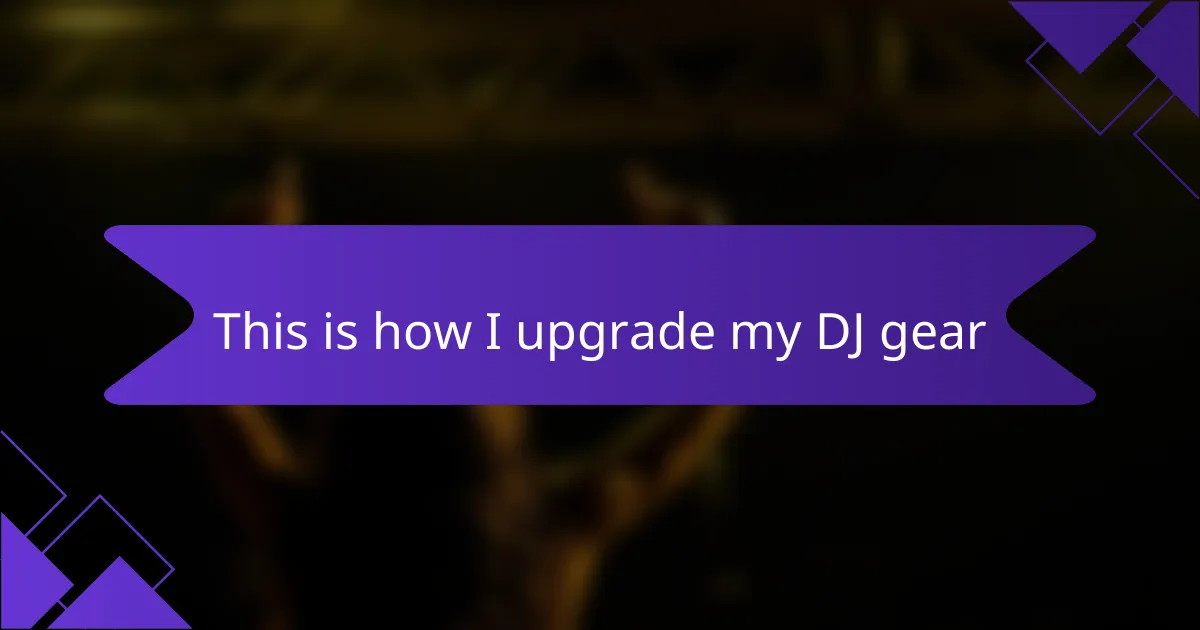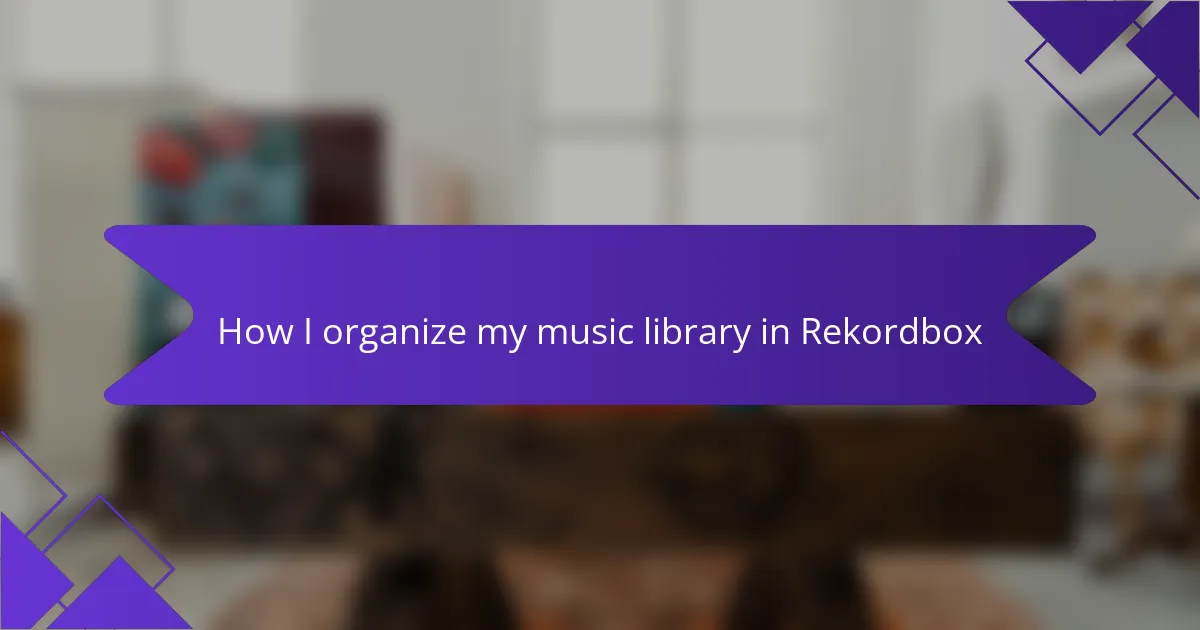Key takeaways
- A great DJ playlist tells a story and creates an emotional journey that resonates with the audience.
- Selecting appropriate music for the event’s context, audience demographics, and timing enhances the overall experience.
- Regularly reviewing and updating playlists ensures they remain relevant and engaging for current audience tastes.
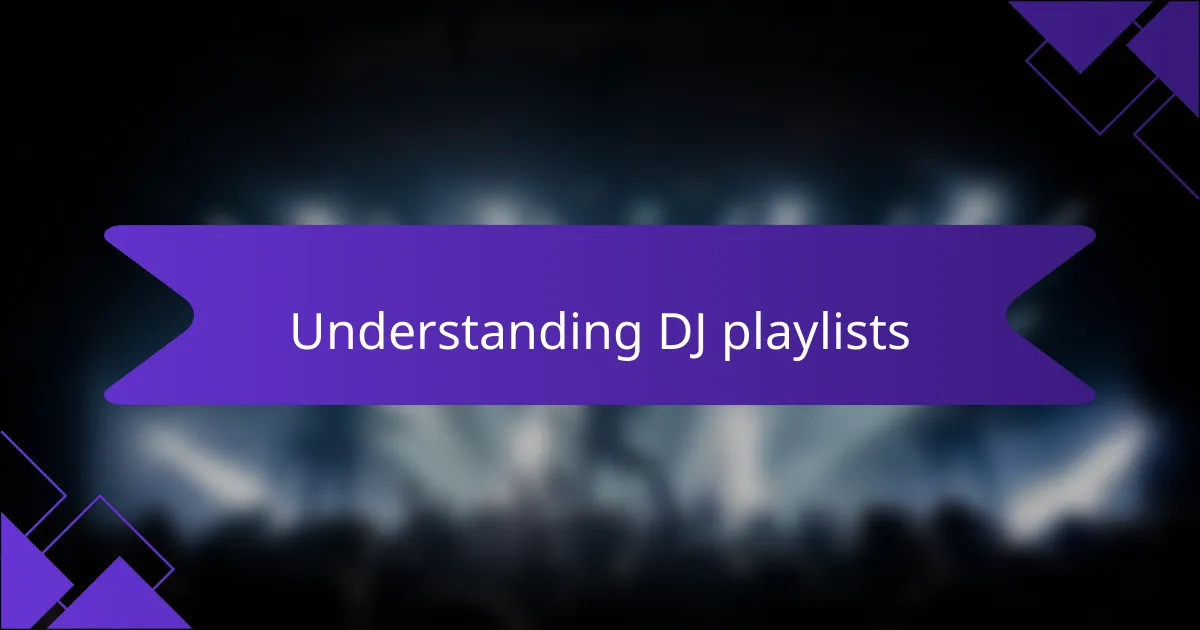
Understanding DJ playlists
When it comes to understanding DJ playlists, I find that the essence of a great playlist lies in storytelling. Each track should flow into the next, creating an emotional journey for the listeners. I often ask myself, “What do I want the audience to feel at this moment?” This reflective approach helps me select songs that resonate with the crowd and maintain their energy.
The context of the event is crucial. For instance, a wedding requires a different vibe compared to a corporate event or a club night. In my experience, I’ve noticed that blending familiar classics with fresh hits creates a balance that keeps everyone engaged. It’s about reading the room and curating a soundtrack that feels personal and inclusive.
Here’s a quick comparison of different types of playlists you might consider for various events:
| Playlist Type | Best For |
|---|---|
| Chill Vibes | Relaxed gatherings, lounges |
| Upbeat Party | Dance events, celebrations |
| Classic Hits | Weddings, reunions |
| Genre-Specific | Themed events, niche audiences |
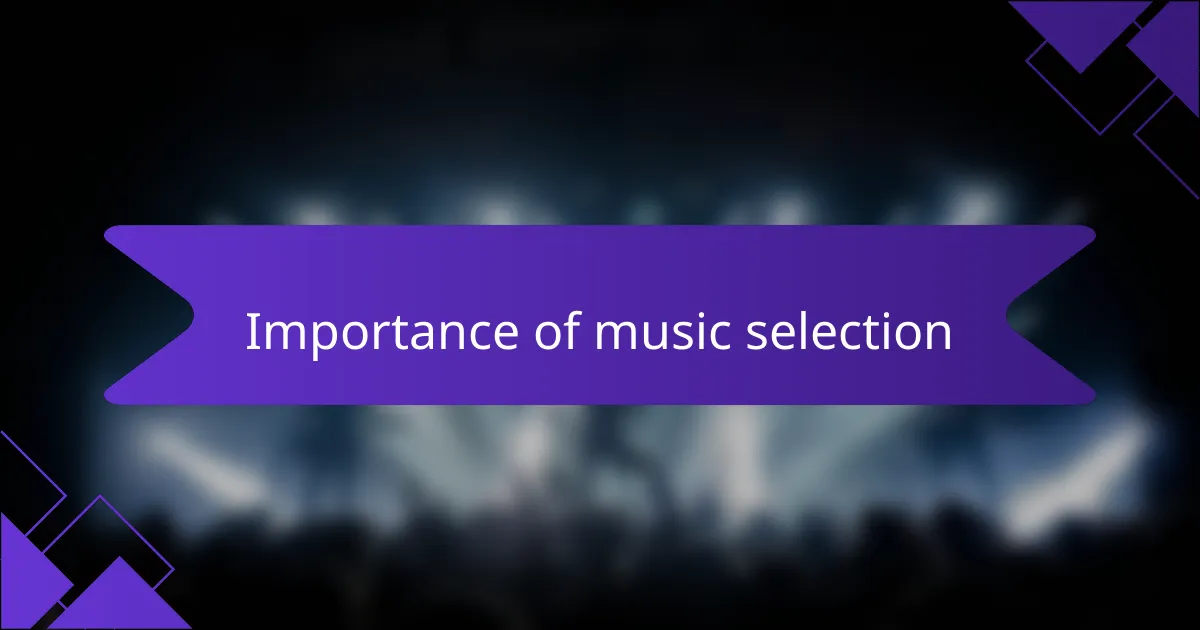
Importance of music selection
Selecting the right music for an event is crucial. I’ve seen firsthand how the perfect playlist can elevate the mood, create lasting memories, and even spark connections among guests. When I DJ, I pay close attention to the crowd’s energy and preferences; this ensures the music resonates deeply with everyone present.
The choice of music can set the tone for an occasion—whether it’s a wedding, corporate event, or party. I remember a wedding I worked where a carefully curated playlist had everyone dancing and celebrating together. It’s not just background noise; it’s the heartbeat of the event.
Here’s a comparison of the impacts of different music selections during events:
| Music Type | Impact on Event |
|---|---|
| Upbeat/Party Music | Encourages dancing and high energy, great for celebrations. |
| Softer Background Music | Facilitates conversation, perfect for intimate gatherings or dinners. |
| Genre-Specific Music | Creates a theme, enhancing the overall atmosphere and guest experience. |
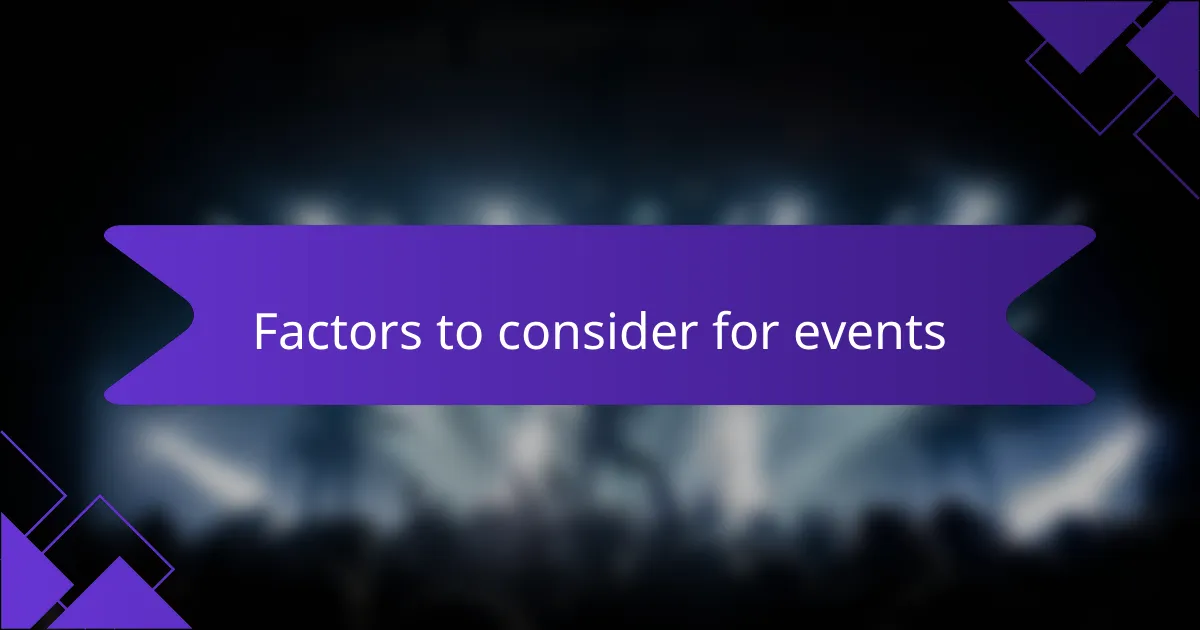
Factors to consider for events
When selecting a playlist for an event, I always consider the audience’s demographics and the overall vibe I want to create. For instance, at a recent wedding I DJed, the crowd ranged from young kids to grandparents. I knew I had to weave together nostalgic tracks that appealed across generations, while still keeping the energy high.
Another crucial factor is the timing of the event. I like to break down the playlist into different segments based on key moments. For example, during cocktail hour, I prefer more laid-back tunes to encourage mingling, then transition into upbeat tracks once it’s time for dancing. This thoughtful progression keeps the atmosphere lively and engaging throughout the night.
- Audience demographics: Understand the age, cultural background, and preferences of your guests.
- Event type: Tailor your music selection for weddings, corporate events, or parties.
- Timing: Structure the playlist to match different phases of the event (e.g., cocktail hour, dance floor).
- Energy levels: Transition between different tempos to maintain engagement.
- Venue acoustics: Consider how the space will influence sound quality and volume.
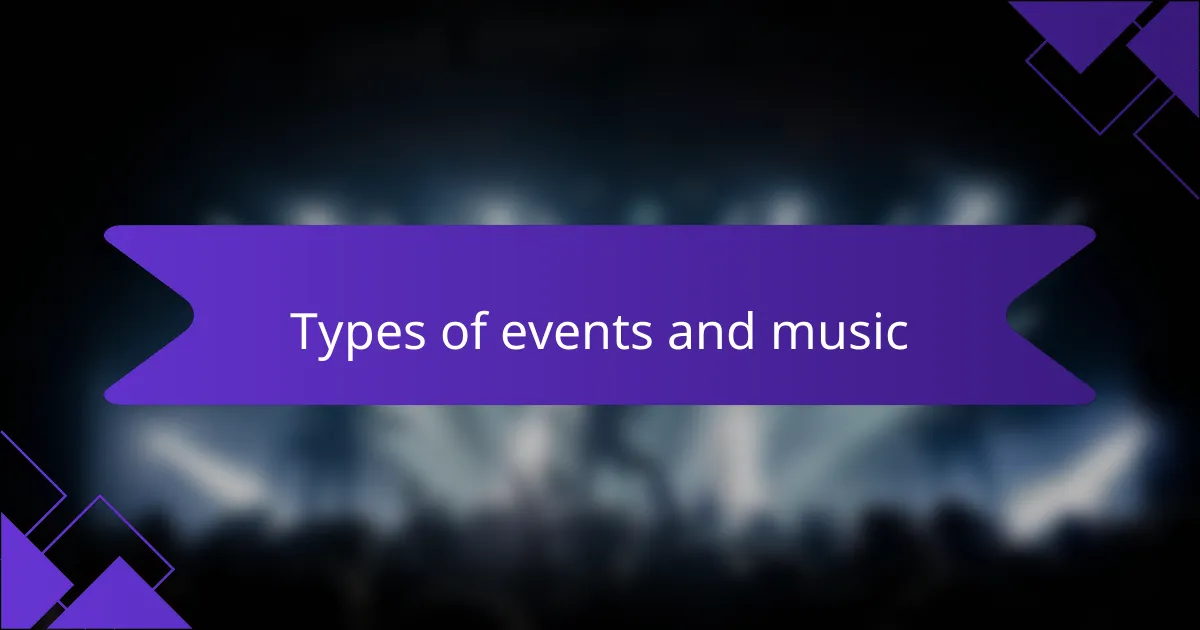
Types of events and music
When selecting music for different types of events, it’s crucial to match the vibe and energy of the occasion. For instance, I’ve found that a wedding celebration often calls for a romantic and uplifting playlist that captures the couple’s love story, with songs that resonate emotionally with guests. Conversely, corporate events require a more polished and professional sound, focusing on background tunes that foster networking while minimizing distraction.
Here’s a simplified breakdown of various event types and their corresponding music preferences:
- Weddings: Romantic ballads, upbeat love songs, and dance tracks.
- Corporate Events: Soft instrumentals and contemporary pop hits.
- Birthday Parties: Fun, lively music spanning various decades to cater to diverse age groups.
- Festivals: Energetic and upbeat songs that encourage dancing and celebration.
- Private Gatherings: Personalized playlists that reflect the host’s musical taste.
I love adapting the playlist to suit the event because it helps create a unique experience that truly resonates with everyone involved. There are moments, like at a wedding when the couple has their first dance, where the right song transforms the atmosphere into something magical.
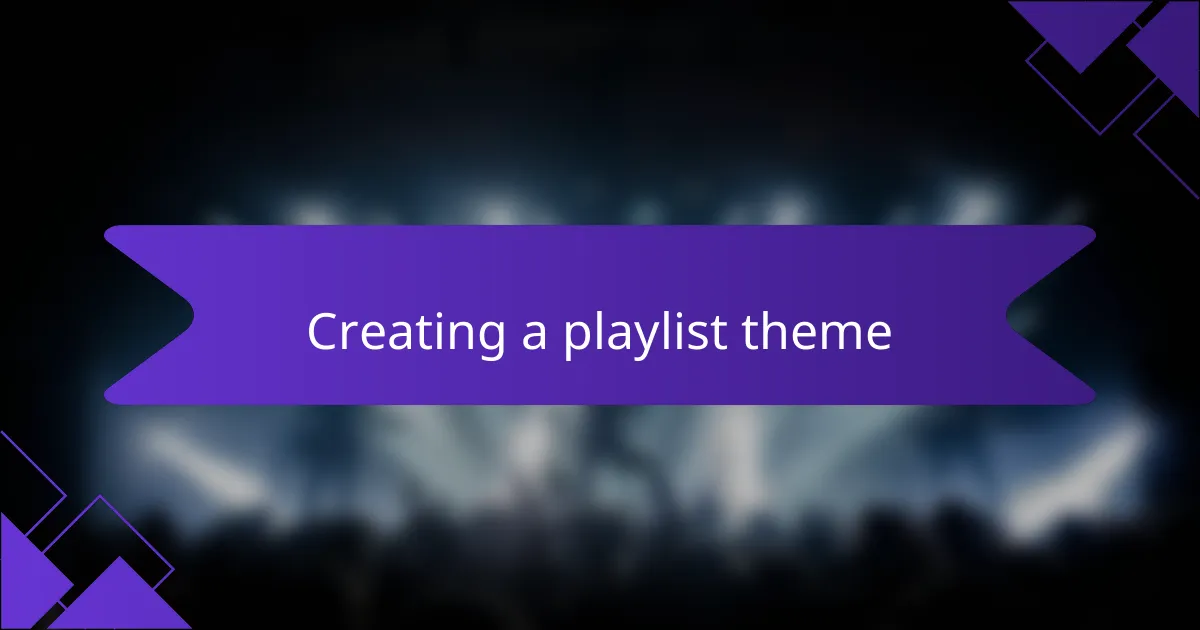
Creating a playlist theme
Creating a playlist theme is all about connecting with the essence of the event. I often begin by envisioning the atmosphere I want to cultivate. For example, while curating a playlist for an outdoor summer wedding, I thought about the sun setting and the joy of love surrounding the crowd. I chose a blend of acoustic love songs and lively hits that invited everyone to dance, evoking a carefree vibe.
I’ve realized that integrating a cohesive theme can significantly enhance the listener’s experience. One time, I crafted a retro-themed playlist for a birthday party. It was thrilling to see the guests light up as they recognized old favorites from their youth. Songs can act as a time machine, taking us back to cherished memories. How incredible is it when the right song plays, and everyone suddenly feels part of a shared experience? It’s moments like these that reveal the power of a well-thought-out theme.
Additionally, considering the visuals of the event can guide your musical choices. If the decor is whimsical or elegant, I find it essential to reflect that vibe in the playlist. For a recent corporate gala, I juxtaposed contemporary instrumental tracks with hints of classic jazz. This not only complemented the sophisticated decor but also encouraged conversation amongst the guests. Balancing the visual and auditory aspects creates a memorable and immersive atmosphere that resonates with everyone involved.
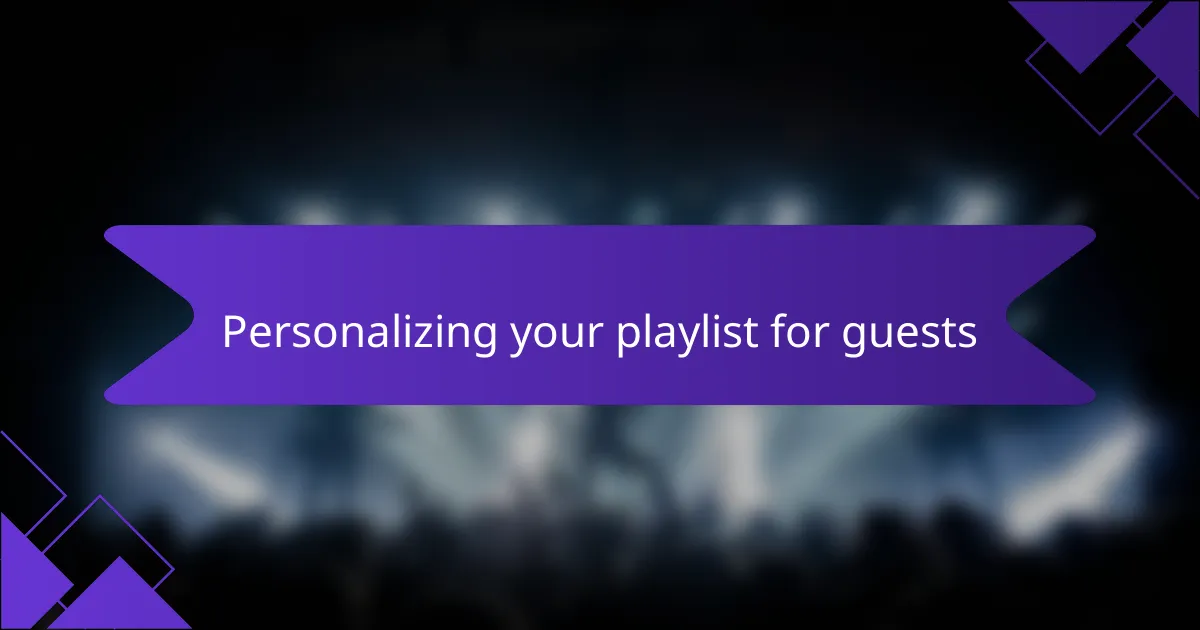
Personalizing your playlist for guests
When it comes to personalizing your playlist for guests, it’s essential to consider the vibe of the event and the diverse tastes of your audience. I’ve found that a mix of crowd favorites and lesser-known gems often creates a magical atmosphere. For instance, while at a wedding, I noticed how incorporating a guest’s favorite anthem sparked joyful dances and brought people together—those moments truly matter.
Another tip is to pay attention to the demographics of your guests. Are they younger? Perhaps include trending hits. For a more mature crowd, classic tracks can invoke nostalgia. I’ve seen firsthand how a well-thought-out song selection transformed an event’s energy, making everyone feel included and excited.
Here’s a comparison table that highlights different musical approaches you can take based on your event type:
| Event Type | Music Style |
|---|---|
| Wedding | Romantic ballads and upbeat dance hits |
| Corporate event | Instrumental background music and soft pop |
| Birthday party | Top 40 hits and nostalgic classics |
| Outdoor festival | Live bands, indie tracks, and DJ remixes |
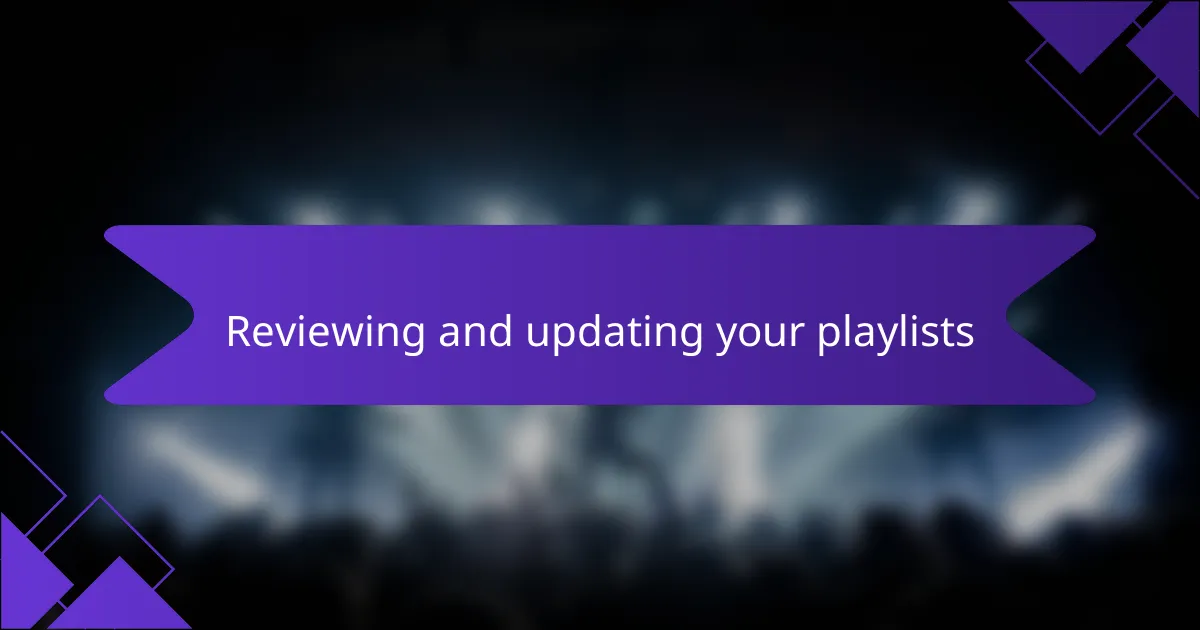
Reviewing and updating your playlists
Reviewing and updating your playlists is crucial to maintaining the energy and vibe of your events. I’ve found that music trends can shift quickly, so I regularly revisit my playlists to ensure they resonate with the audience’s current tastes. It’s exciting to discover new tracks that capture the evolving moods and preferences of guests.
I recommend setting aside time after each event to reflect on what worked and what didn’t. Here are a few tips that have helped me streamline the process:
- Track performance: Note which songs generated the most reaction and consider rotating in similar styles.
- Stay current: Follow music charts and playlists to identify hit songs and emerging genres.
- Diverse genres: Regularly mix in new genres to keep your playlists fresh and engaging.
- Audience feedback: Encourage guests to share their favorite tracks, allowing them to feel involved in the musical experience.
- Personal touches: Add tracks that resonate personally with you; your passion will translate to the crowd.
These practices not only keep your playlists relevant but also deepen your connection to the music you choose to share.

